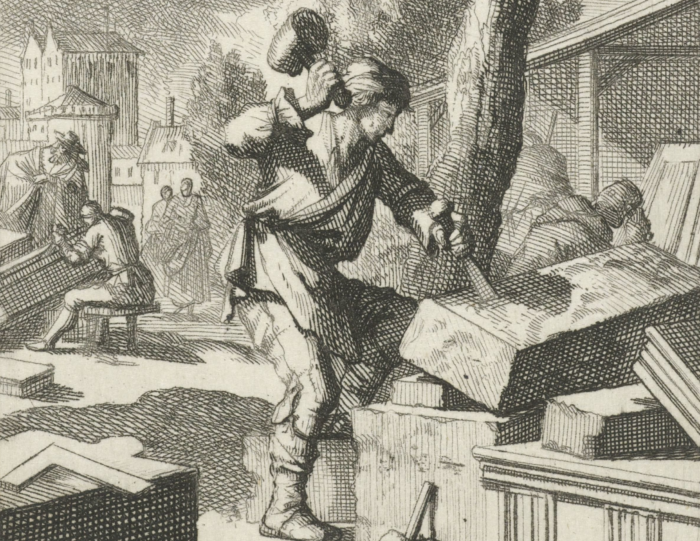St Vedast
Read the stories of four that either survived or succumbed to the flames, and how they reemerged from the ruins.

St Vedast
Edward Strong junior was apprenticed to his father Edward Strong on 30 July 1691. On 2 April 1699 Edward junior married Susannah, daughter of Joseph Roberts, sergeant plumber in the new St Paul’s Cathedral. They had four daughters and a son, also called Edward, who died of smallpox at the age of 20.
In 1668, before marrying Susannah, Edward journeyed through France, Holland, and Italy with Christopher Wren’s son, also named Christopher. They wanted to travel to Italy as Christopher Wren himself only managed to visit Paris where he met Bernini.
On 18 October 1698 Edward junior was made free of the Worshipful Company of Mason’s by paying the Steward’s fine. He was later admitted to the Court of Assistant on 26 March 1702, became Warden in 1712 and 1715 and then Master in 1718. Edward died on 10 October 1741.

Stone mason - Steenhouwer, Jan Luyken, 1694 - Rijksmuseum
It seems likely that Edward junior was his father’s assistant or partner at Greenwich, Blenheim and St Paul’s. At St Paul’s between 1706 and 1708 he might have helped his father build the lantern and the marble pavement under the dome and transept. Edward was involved in the building of the lanterns and spires at several City Churches: Christchurch Greyfriars, St Vedast alias Foster, St Stephen Walbrook, St James Garlickhythe and St Michael Cornhill. According to a 1727 poll book Edward lived in Greenwich.
After the Great Fire of London, the Judicature Act, approved by Parliament, established Special Fire Courts to address landlord conflicts. These Courts became famed for their quickness of judgement, and they met from February 1667 through to September 1772.
We can recognise the work done and the identity of the craftsman in charge from the Fire Courts records, as well as specifics of the work carried, expenses incurred, and the craftsman’s signature. These documents contain some intriguing and odd facts concerning church reconstruction, such as the fact that St Vedast’s spire was constructed in Greenwich and then transported to London because there was not enough room in the church yard. They therefore made it at Edward’s stone yard in Greenwich, then had to carry the worked stone from the shed to the crane. An extra price was paid for putting the spire into a boat called a lighter and for attending both lighter and carts, as well as refitting, fixing, and mending the unavoidable faults caused by transferring the worked stone from one location to another.
Read the stories of four that either survived or succumbed to the flames, and how they reemerged from the ruins.
Keep up to date with the latest news ...